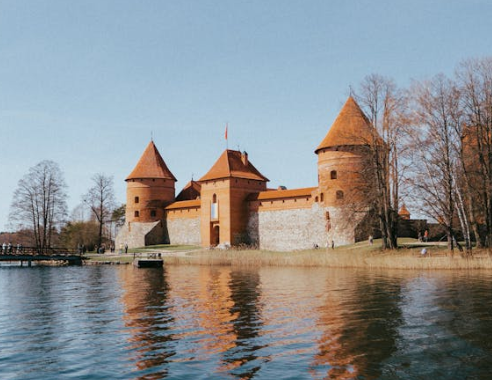
How to Get Lithuanian Citizenship Through Heritage: A Complete Guide
Lithuania, a country rich in history and cultural heritage, has become an attractive destination for people of Lithuanian descent who want to reconnect with their roots. For many individuals around the world, especially in the United States, Canada, South Africa, Brazil, and Australia, the opportunity to restore or acquire Lithuanian citizenship is a way to reclaim their ancestral identity. This article will walk you through the step-by-step process of how to get Lithuanian citizenship through heritage, what documents are required, and what to expect throughout the application process.

Who Qualifies for Lithuanian Citizenship by Descent?
If you are a descendant of a Lithuanian citizen, you may be eligible to apply for Lithuanian citizenship through descent (heritage). According to Lithuanian law, the following individuals may qualify:
- Persons whose parents, grandparents, or great-grandparents were citizens of the Republic of Lithuania before June 15, 1940.
- Individuals who can prove that their ancestors left Lithuania before 1990 due to occupation, political persecution, or deportation.
- Applicants who can demonstrate uninterrupted bloodline and submit the necessary documentation to support their claim.
Why Apply for Lithuanian Citizenship?
There are several advantages to acquiring Lithuanian citizenship through heritage, including:
- Eligibility for an EU passport, which allows freedom of movement, work, and residence in any EU country.
- Access to European healthcare and education systems.
- A chance to honor and reconnect with your Lithuanian ancestry and family history.
Step-by-Step: How to Get Lithuanian Citizenship Through Heritage
Understanding how to get Lithuanian citizenship through heritage starts with gathering the proper documentation and preparing a strong application. Here’s a detailed breakdown of the steps:
1. Prove Your Lithuanian Ancestry
This is the most important and often the most time-consuming step. You will need to collect documents that confirm your ancestor was a Lithuanian citizen. This may include:
- Birth, marriage, or death certificates of ancestors from Lithuania.
- Lithuanian passports or ID cards.
- Military or school records from Lithuania.
- Emigration documents showing departure from Lithuania before 1990.
It’s essential that these documents show a direct bloodline between you and your Lithuanian ancestor.
2. Translate and Legalize Documents
All foreign documents must be officially translated into Lithuanian by a certified translator and may need to be apostilled or legalized, depending on the country of origin.
3. Submit the Application
The application is submitted to the Migration Department of Lithuania, either through a Lithuanian embassy abroad or directly in Lithuania. You will need to include:
- Application form (filled in Lithuanian).
- Proof of ancestry (as outlined above).
- Copy of your passport or ID.
- Personal statement or cover letter explaining your request.
- Administrative fee payment receipt.
4. Wait for Review and Approval
The review process typically takes 6 to 12 months, but it can be longer depending on the complexity of the case and the completeness of your application. You may be contacted for additional documents or clarification.
5. Obtain Your Citizenship Certificate
Once approved, you will receive a certificate of restored Lithuanian citizenship. You can then apply for a Lithuanian passport and enjoy full rights as a citizen of Lithuania and the European Union.
Can You Keep Your Other Citizenship?
Yes, in most cases. Lithuania allows dual citizenship for those acquiring Lithuanian nationality by descent. You do not have to renounce your current citizenship if you’re reclaiming it through heritage.
Professional Help: Should You Hire a Lawyer?
Although it is possible to complete the process yourself, many applicants choose to hire legal professionals or citizenship agencies. These experts can:
- Help locate documents in Lithuanian archives.
- Ensure your application is complete and correctly filled.
- Speed up communication with Lithuanian authorities.
This can save time and reduce the chances of your application being delayed or rejected.
Conclusion
Reclaiming your heritage through citizenship is a meaningful and rewarding journey. Whether you’re interested in the cultural, legal, or practical benefits, understanding how to get Lithuanian citizenship through heritage is the first step toward reconnecting with your past and opening doors to your future in Europe. With careful preparation and proper documentation, this process is within reach for thousands of people with Lithuanian roots around the world.